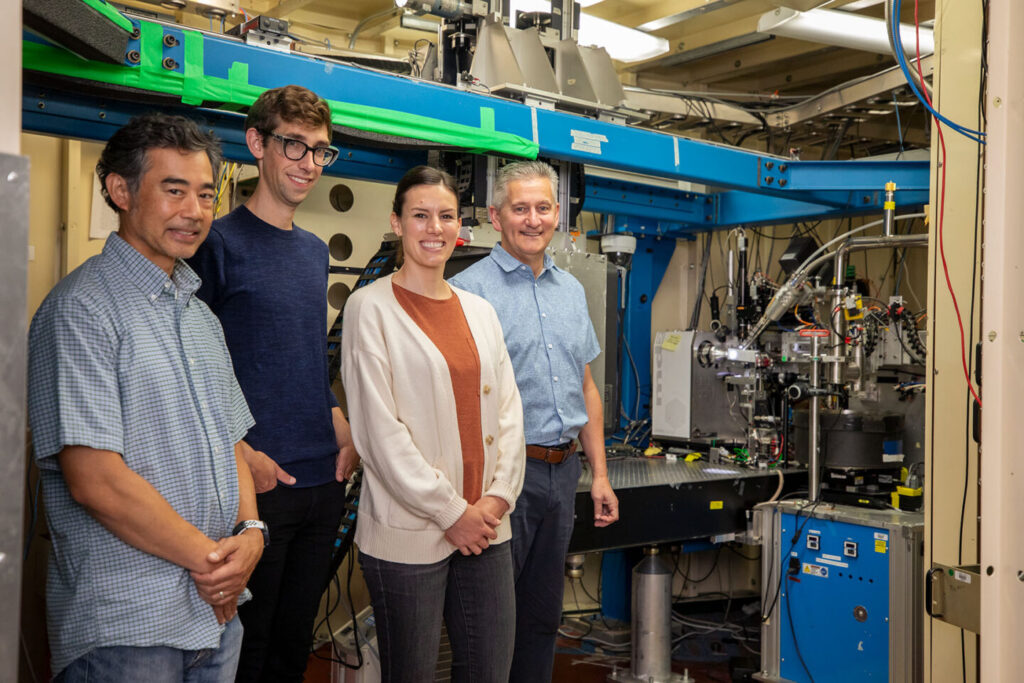The element actinium is notoriously difficult to study due to the metal’s radioactivity and because it’s only available in extremely small quantities. To get around these challenges and learn something about how elements like actinium behave, researchers typically study their lighter, more tractable periodic table neighbors as surrogates.
“There’s a breadth of applications for these elements, from nuclear energy to medicine to national security,” said Jen Wacker, a staff scientist in the Chemical Sciences Division (CSD). “But if we don’t know how they behave, that inhibits the progress we can make.” A better understanding of how actinium interacts with other elements could help improve a promising cancer treatment known as targeted alpha therapy.

Wacker was part of a team led by CSD senior faculty scientist Rebecca Abergel that used a novel approach to grow crystals using only 5 micrograms of pure actinium–roughly one tenth the weight of a grain of salt–by building a “macromolecular scaffold.” The crystals were then cryocooled in liquid nitrogen and illuminated with X-rays at the Advanced Light Source (ALS) macromolecular crystallography beamline 5.0.2, operated by the Berkeley Center for Structural Biology (BCSB).
“The method the team is using is unique and provides details we couldn’t get in the past,” said Marc Allaire, a staff scientist in the Molecular Biophysics and Integrated Bioimaging (MBIB) Division and head of the BCSB team at the ALS. “To the best of my knowledge, Berkeley Lab is the only place in the world where we do this kind of study and measure radioactive protein crystals.”
The X-rays revealed the 3D single-crystal structure for actinium and showed how the element interacted with surrounding atoms. The researchers were surprised to find that actinium behaved differently than predicted based on its counterpart, lanthanum. The results of the study were recently reported in the journal Nature Communications.
In the acknowledgments section of the paper, the authors thanked MBIB scientific engineering associates Anthony Rozales and Kevin Royal, and project scientist Daniil Prigozhin for experimental assistance at beamline 5.0.2.



